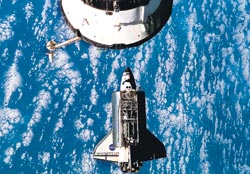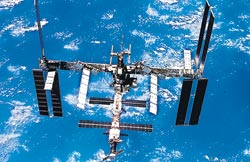
Voyage of the mindMars experiment to push mental endurance to the limit PARIS, (AFP) - You are in the vanguard of humanity, aboard a spaceship to Mars with five other men and women. For more than 17 months, with the perilous void surrounding your tiny refuge, the six of you will share the work and the heroics, battling emergencies, equipment glitches and other hazards on this pioneering mission. But you will also share your personal habits and prejudices, your body odours, your petty jealousies and rivalries, your food, which has the consistency of boiled cardboard. And all these irritants will be magnified by the fact that you can't walk out of the door and there's no short cut home.
So when your depressive fellow crew member with halitosis picks his toenails as he shows you his family snapshots for the 38th time, a catchline for a 1970s horror movie may well pop up in your mind: In space, no one can hear you scream. "The biggest risk is not physical, it's psychological, it's being confronted by yourself, of discovering who you are," says French astronaut Jean-Pierre Haignere, who spent 186 days aboard the Russian orbital spaceship Mir in 1993. Mental endurance for interplanetary trips is now to be put to the test in the biggest space flight simulation ever. Six people are to be confined for 520 days -- and will continue to 700 days if they pass this first milestone successfully -- in a mockup Martian spaceship in a research lab in Moscow. If all goes well, the big experiment will start in late 2008, after one or possibly two 105-day simulations to fine-tune work routines and emergency scenarios. The cosmos is a deeply hostile place for humans, but the risk multiplies many times when it comes to long-term trips. Beyond our backyard, voyages expose a body to cosmic radiation that can slice through DNA with the ease of a cordon-bleu chef chopping carrots. Muscles become flaccid in the absence of gravity and bones lose their density. And that doesn't take into account other hazards such as life-support failure, communications breakdown or an asteroid strike. But these may be well outstripped by the challenge of keeping focussed -- and sane. The six test subjects will be confined to five interconnected modules, comprising a common living area, individual bedrooms, a bathroom, command module and a fitness room, totalling the equivalent volume of nine 60-cubic-metre (2,100-cubic-feet) truck containers.
No contact will be allowed with the outside world except via the fake mission control. Communications, by radio and email, will be delayed by up 40 minutes, replicating the time it would take for messages to cross the 56 million kilometres (35 million miles) between Earth and Mars. Food will be meal packets of the kind eaten aboard the International Space Station (ISS), supplemented by treats on special days. Alcohol and smoking are out. For 250 days, the six crew will simulate the outward trip to Mars. Then, for 30 days, three of them will be cloistered in part of the ship to simulate the descent to Mars and the operations there. The trio then "return" to dock with the mother ship for the 240-day trip home. The door of the ship will remain closed, and no one will be allowed to intervene or leave except in an "absolute, severe emergency," such as a fire, says Marc Heppener of the European Space Agency's (ESA) Science and Application Division. Even some surgical emergencies, such as appendicitis, could be expected to be dealt with by the crew. Viktor Baranov of Russia's Institute for Biomedical Problems (IBMP), which is carrying out the simulation, says he has had 150 applications from prospective candidates. On Tuesday at the Paris Air Show, ESA announced it was calling for applications from citizens of its own member states. The gender lineup has yet to be determined. Some experts think a single-sex crew may operate more effectively because there is no risk of sexual rivalry if a couple happen to pair up, while others think that the presence of the opposite sex provides a calming factor and a valuable, different perspective on problems. Nor is there any agreement about what would be a good number -- five men to one woman (or the reverse) could lead to sexual rivalry, and three-three may lead to gender tribalism, pitching men against women. "Four and two might be appropriate," says Heppener. In many minds is an ugly incident that happened in a 110-day experiment in Moscow in 1999, when two Russian men engaged in a fistfight and one of them forcibly kissed a Canadian female participant. She stuck with the mission but insisted on having a lock fitted to her door. As for the crew, organisers are looking for people aged 25-50 who are engineers and biologists, as well as a doctor -- and all must have proficiency in Russian and English. Then comes the character part, in which candidates will be slimmed down by psychological profiling and other tests. "You must be a team player but also able to work by yourself," says Heppener, acknowledging that this all amounts to a mixture as exceptional as a trip to Mars itself. |
|| Front
Page | News | Editorial | Columns | Sports | Plus | Financial
Times | International | Mirror | TV
Times | Funday
Times || |
| |
Copyright
2007 Wijeya
Newspapers Ltd.Colombo. Sri Lanka. |

